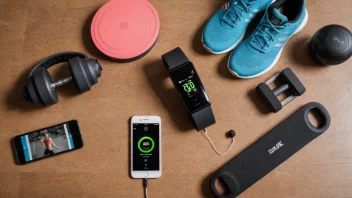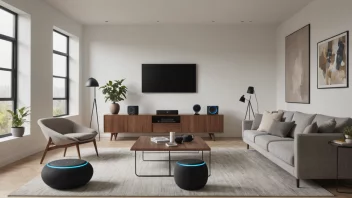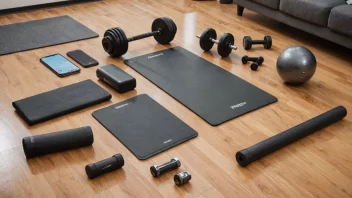In today's fast-paced world, stress and anxiety have become common challenges that many men face daily. Balancing work, family, and personal responsibilities often leads to overwhelming feelings that can impact physical and mental well-being. Fortunately, technology has stepped in to offer solutions, with wearables emerging as innovative tools to help manage these issues. These devices, ranging from smartwatches to fitness trackers, provide valuable insights into our physical and mental states, offering ways to cope with stress and anxiety effectively. In this article, we will explore how wearables can be integrated into daily routines to enhance mental health, improve mindfulness, and foster a balanced lifestyle.
Understanding Wearables and Their Benefits
Wearable technology encompasses a wide range of devices designed to be worn on the body, typically tracking activity, health metrics, and sometimes providing notifications or tools for managing daily tasks. For men, these devices can serve as personal health monitors that provide insight into various aspects of well-being. Key benefits include:
- Real-time Data Tracking: Wearables can monitor heart rate, sleep patterns, and physical activity levels. This data allows users to identify stress triggers and understand how their daily habits influence their mental health.
- Mindfulness Features: Many wearables come equipped with guided breathing exercises, meditation timers, and reminders to take breaks, encouraging users to practice mindfulness throughout their day.
- Community and Support: Some devices offer social features, connecting users with friends or communities focused on health and wellness, fostering a sense of belonging and support.
How Wearables Monitor Stress and Anxiety
Wearables leverage various sensors and algorithms to help users monitor their stress levels. Here are some of the key ways they accomplish this:
Heart Rate Variability (HRV)
One of the most critical indicators of stress is heart rate variability, which measures the time interval between heartbeats. A high HRV is generally associated with a relaxed state, while a lower HRV can indicate stress. Wearables that monitor HRV can alert users when their stress levels are elevated, prompting them to take proactive measures.
Sleep Quality Tracking
Quality sleep is essential for managing stress and anxiety. Wearables equipped with sleep tracking features can analyze sleep stages and duration, providing insights into how well users are resting. Poor sleep quality can exacerbate anxiety, making it crucial to understand and improve sleep habits.
Activity Monitoring
Regular physical activity is known to reduce stress levels significantly. Wearables track daily steps, workouts, and other physical activities, encouraging users to maintain an active lifestyle. Engaging in physical fitness can be a powerful antidote to stress.
Integrating Wearables into Daily Life
To maximize the benefits of wearables for stress management, it’s essential to integrate them into daily routines effectively. Here are some practical tips:
Set Clear Goals
Before diving into wearable technology, it’s crucial to establish clear wellness goals. Whether it’s improving sleep quality, increasing daily activity, or practicing mindfulness, having specific targets can help users stay focused and motivated.
Utilize Mindfulness Features
Many wearables come with built-in mindfulness features. Take advantage of guided breathing exercises or meditation sessions. Setting aside a few minutes each day to engage in these practices can significantly reduce stress levels.
Regularly Review Data
Wearables provide a wealth of information, but it’s essential to analyze this data regularly. Review trends in heart rate, sleep patterns, and activity levels to identify potential stress triggers and make informed adjustments to daily routines.
Choosing the Right Wearable
With a plethora of options available on the market, selecting the right wearable can be daunting. Here are some factors to consider:
Features
Evaluate which features are most important for managing stress. Look for devices that offer HRV monitoring, sleep tracking, and mindfulness capabilities.
Comfort and Style
Since wearables are meant to be worn throughout the day, choose a device that is comfortable and matches your personal style. Whether you prefer a sleek smartwatch or a simple fitness tracker, the right fit can encourage consistent use.
Battery Life
Consider the battery life of the wearable, as some devices require frequent charging. A longer battery life allows for uninterrupted tracking and is more convenient for daily use.
Success Stories
Many men have found success in managing stress and anxiety through the use of wearables. For instance, one user reported that tracking his sleep patterns helped him identify that he was not getting enough restorative sleep, prompting changes that improved his overall well-being. Another man utilized the mindfulness features of his smartwatch to incorporate regular meditation breaks into his workday, leading to a noticeable decrease in stress levels.
Conclusion
In conclusion, wearables offer a powerful ally in the journey to manage stress and anxiety. By providing real-time data, promoting mindfulness, and encouraging active lifestyles, these devices can help men take charge of their mental health. By integrating wearables into daily routines and utilizing their features effectively, men can gain valuable insights into their well-being and develop healthier habits that foster a balanced and fulfilling life. As technology continues to evolve, embracing these tools may be the key to navigating the complexities of modern life with greater ease.






